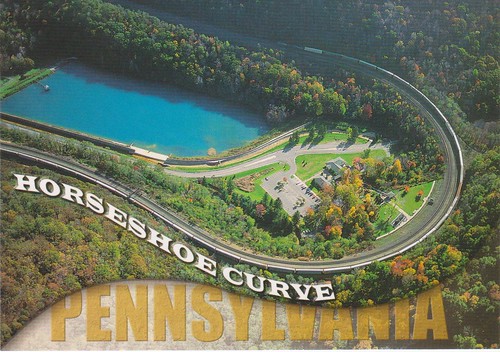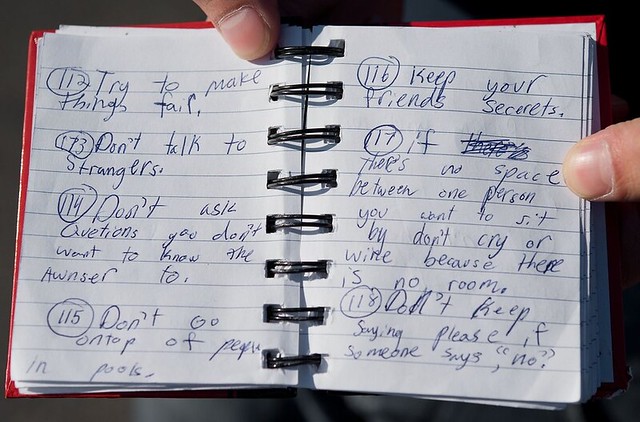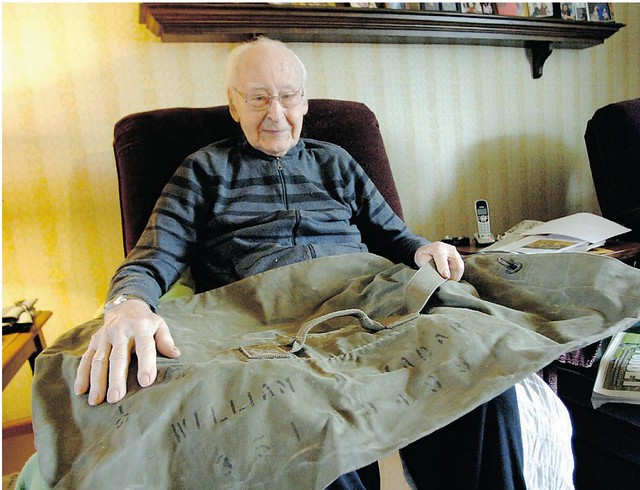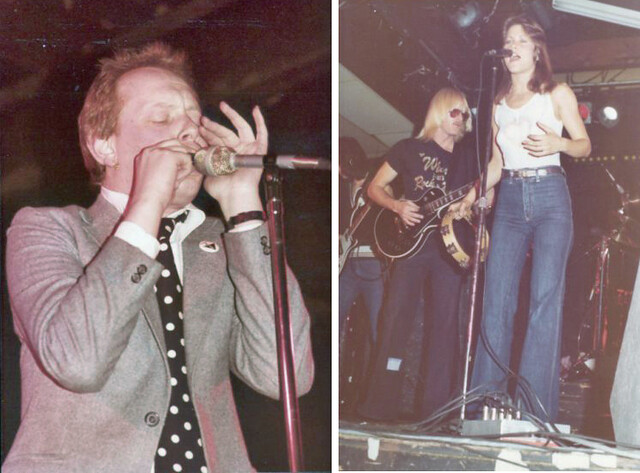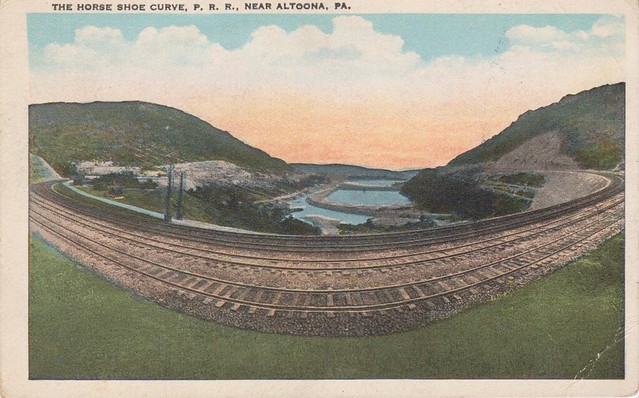
Today we have our latest installment of Charlene Dodds's postcard rephotography project (previous editions of which can be found here, here, here, here, and here). Here's Charlene:
My continued thanks to Charlene for sharing her stories and family postcards with us.Heading northwest from Bedford, Pennsylvania, I went looking for the famous Horseshoe Curve just to the west of Altoona. The curve is shown on a postcard I found with my great aunt’s college-era postcards [see above]. It was never mailed and is blank on the back, but I suspect she and her chums took an adventure to see this engineering marvel, purchased a postcard as a souvenir, and decided they didn't want to part with it, especially since cameras were not commonly owned back then. The postcard was probably their only visual record of their visit to the curve.
I eventually located Horseshoe Curve, which is part of a rail line that was constructed to shorten the distance between Harrisburg and Pittsburg and eliminate the need for another line. The 220-degree curve was incorporated to lessen the steep grade and allow safe passage of trains. Even so, before the invention of modern braking systems, the rails were regularly pulled up and switched around to give equal wear to both sides, doubling their lifespan. So many troops were moved along this line during World War II that the Germans hatched a plot to blow up the tracks and even landed men on our shores to do just that. (The FBI ended their plans.) The curve is so ingrained into the local culture that Altoona's minor league baseball team is called the Curve.
Horseshoe Curve looks much the same today as it did back then. But trespassing on the rail tracks is illegal and dangerous, so I couldn't take a proper photo and had to settle for a contemporary postcard:
Next: I was intrigued by the postcard of Bickford Fire Brick Co. ("Largest Fire Brick Plant in the World Under One Roof"), which was sent to my grandmother from “Fritz & Foster” in 1924 (click to enlarge):
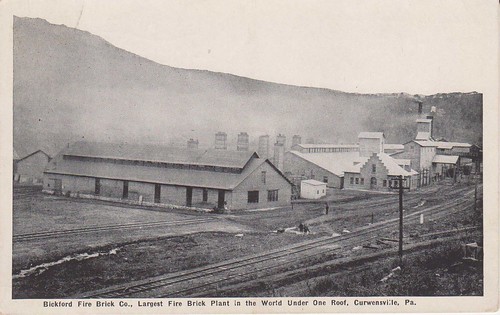
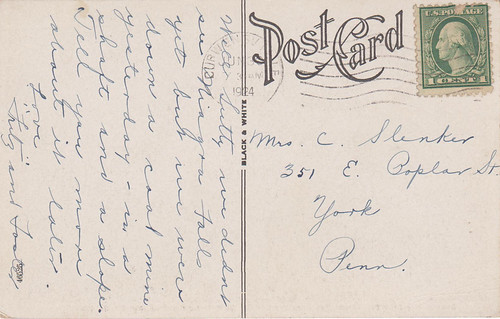
First, what is a fire brick? I discovered it is a ceramic brick made to withstand high temperatures inside a fireplace, furnace, or iron smelter -- and of course there were lots of those in nearby Pittsburgh. Clearfield County, Pennsylvania, is known for the high quality of clay used in manufacturing these bricks, and Bickford Fire Brick Co was “what is probably the finest, best equipped and one of the largest fire-brick plants in this country," at least according to in a state review in the 1930s. Alas, there is no trace of this plant left in town, so I wasn't able to photograph it.
Continuing farther west, I searched for Conneaut Lake Park, which was shown on a postcard received by my grandparents in 1948. The day I arrived was picture perfect, just as depicted in the postcard (click to enlarge):

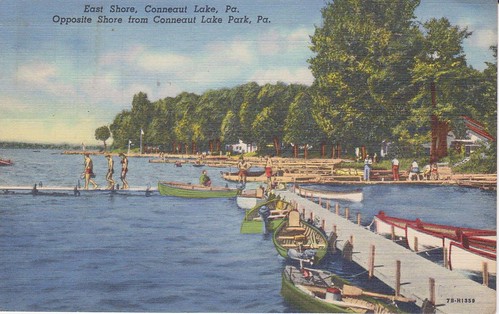
While I was taking photos, there was a great influx of motorcycles and many vans, from which emerged various tattooed folks. Then a loudspeaker announced, “Ladies and gentlemen, we appreciate your patience. Ozzy Osbourne and Black Sabbath will be here any minute. Their plane has finally landed and they are on their way. The show will be well worth the wait.” My grandparents would roll in their graves if they knew this idyllic site was about to be overrun by the heavy metal hordes.

